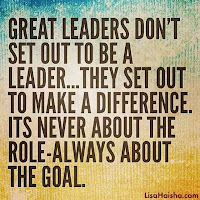Denning states, "Transformational leaders exhibit strong values and ideas and are effective at motivating followers to act in ways that support the overall good; they end up changing both themselves and their followers" (p. 292-293).
"Interactive leadership builds on personal integrity and authenticity" (Denning, p.270). I hope to have my values become contagious and others to trust me and my leadership. I must remember to be authentic even when tempted to mimic social norms or faced with difficult situations. "It’s tempting to forget, but being yourself—and being around other people who are themselves—is much easier than pretending, or falsifying, or putting on a social mask, which are common ways to cope with a world that feels false" (Harbinger, n.d.) Integrity is a core value in the Air Force, one which requires intentional effort and constant focus. It is easy to "go with the flow" or "turn the other cheek" because it may be easier. However, as leaders we must lean in to the pain to do the right thing even when it feels unnatural. (Ellis, 2014)
I won't depend on the possession of hierarchical authority (Denning, p. 270). I will practice 360 degree leadership. Mentoring has always been a passion of mine. However, I didn't realize how much of mentoring was ingrained in transformational leadership. Transformational leadership is defined as a “process whereby a person engages with others and creates a connection that raises the level of motivation and morality in both the leader and the follower; this type of leader is attentive to the needs and motives of followers and tries to help followers reach their fullest potential” (Northouse, 2016) This doesn't have to always be mentoring down. In fact, I find the most useful leadership and mentoring is done between peers. I will keep this in mind as I strive to be a different kind of leader.
"Active participation in the world rather than detached observation" (Denning, p. 271). Action is critical to success and leadership. You must be intentional in your efforts and create goals and milestones. Transformational leadership is "concerned with emotions, values, ethics, standards, and long-term goals."(Northouse, p. 161) This is exactly what I have, and continue to, work towards. In the military, especially as a Senior Non-Commissioned Officer, I am held to very high standards. However, exceeding these standards has always been my goal. I also hold my Airmen to very high standards while maintaining a balance between mission and people. Goals and milestones are essential to accomplishing the mission, but that must not be at the expense of your people. I make it a priority to develop good relationships with my team. That, along with a clear vision and proper accountability will influence and motivate my followers to successfully accomplish the mission.
Denning, S. (2011). The leader’s guide to storytelling: Mastering the art and discipline of business narrative. San Francisco, CA: Jossey-Bass.
Ellis, L. (2014). Leading with Honor: Leadership Lessons from the Hanoi Hilton. S.1.: FreedomStar Media.
Harbinger, J. (n.d.). Solving the Authenticity Paradox (How To Be Who You Really Are). Retrieved October 6, 2017, from https://theartofcharm.com/confidence/solving-authenticity-paradox-really/
Northouse, P. G. (2016). Leadership: Theory and Practice (7th ed.). Thousand Oaks, CA: Sage Publishing.



































